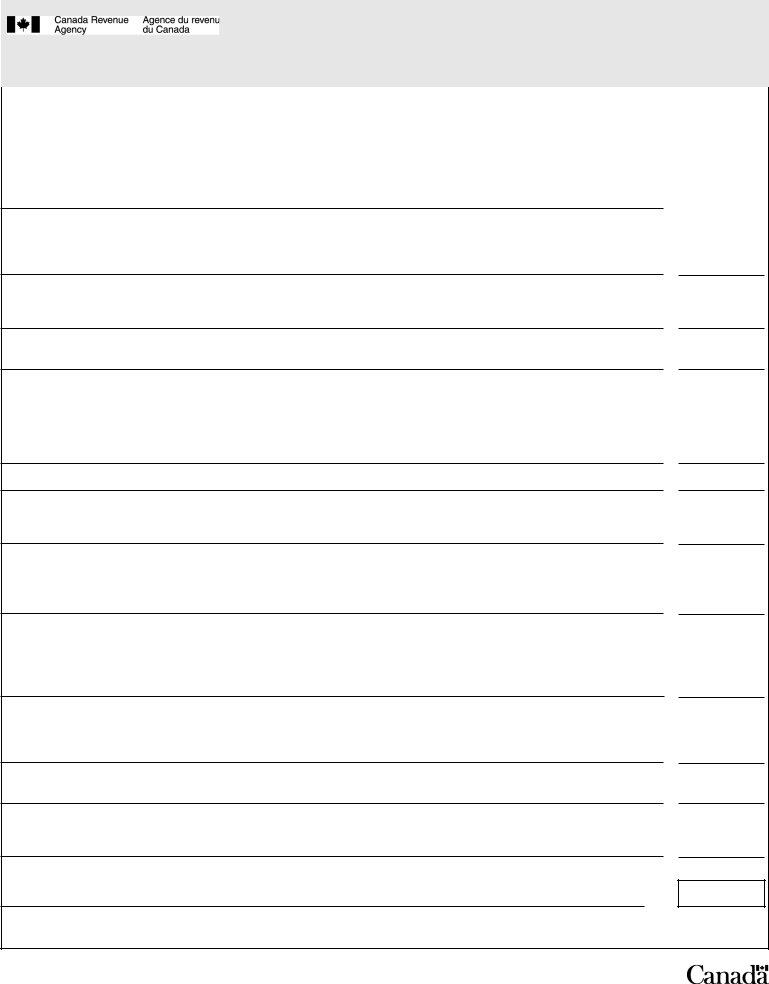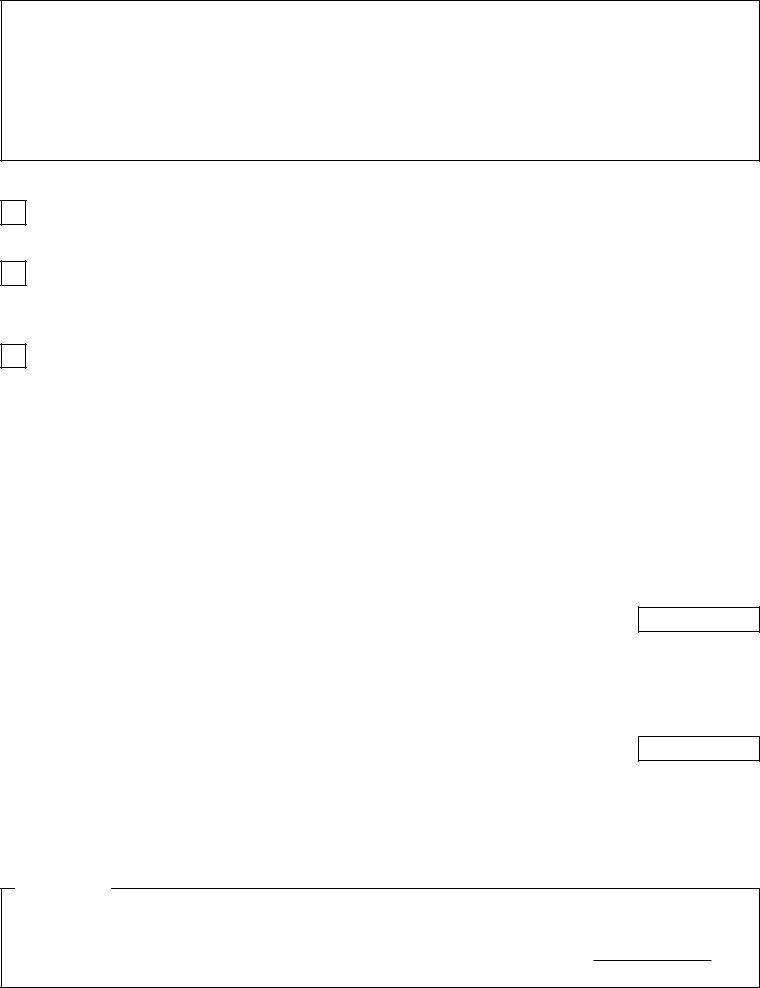The Canada TD1, formally known as the 2012 Personal Tax Credits Return, plays a crucial role in determining an employee's tax deductions by their employer or payer. It is essential for employees to complete this form with an accurate estimate of their circumstances for the year. The form includes sections on basic personal amounts, claims for children born in 1995 or later, age amount for those 65 or older, pension income amount, along with tuition, education, and textbook amounts for students. Additionally, it addresses the disability amount, amounts for supporting a spouse or common-law partner, and various other credits including those for dependants. The form also outlines conditions for non-residents, multiple employers or payers, and specifies the necessity of completing a provincial or territorial personal tax credit return if certain thresholds are met. Moreover, the TD1 form contains options for individuals living in prescribed zones to claim deductions and allows for adjustments in tax deductions whether for additional taxes or reductions based on eligible deductions not listed on the form. Each section of the TD1 is meticulously designed to ensure that both employee and employer can accurately calculate the tax deductions, underscoring the importance of fully understanding and correctly completing the form. Finally, the form emphasizes the importance of truthfulness and accuracy, warning of the serious offence of making a false return.
| Question | Answer |
|---|---|
| Form Name | Canada Form Td1 |
| Form Length | 2 pages |
| Fillable? | No |
| Fillable fields | 0 |
| Avg. time to fill out | 30 sec |
| Other names | td1 form first name and initial, td1 federal 2019 fillable, td1 form 2020 fillable, td1 form canada fillable pdf |

2012 PERSONAL TAX CREDITS RETURN |
TD1 |
|
|
Your employer or payer will use this form to determine the amount of your tax deductions.
Read the back before completing this form. Complete this form based on the best estimate of your circumstances.
Last name |
First name and initial(s) |
Date of birth (YYYY/MM/DD) |
Employee number |
||||||||
|
|
|
|
|
|
|
|
|
|
|
|
Address including postal code |
|
For |
Social insurance number |
||||||||
|
|
Country of permanent residence |
|
|
|
|
|
|
|
|
|
|
|
|
|
|
|
|
|
|
|
|
|
|
|
|
|
|
|
|
|
|
|
|
|
|
|
|
|
|
|
|
|
|
|
|
|
1.Basic personal amount – Every resident of Canada can claim this amount. If you will have more than one employer or payer at the same time in 2012, see "More than one employer or payer at the same time" on the next page.
If you are a |
10,822 |
2.Child amount – Either parent (but not both), may claim $2,191 for each child born in 1995 or later, that resides with both parents throughout the year. If the child is infirm, add $2,000 to the claim for that child. Any unused portion can be transferred to that parent's spouse or
3.Age amount – If you will be 65 or older on December 31, 2012, and your net income for the year from all sources will be $33,884 or less, enter $6,720. If your net income for the year will be between $33,884 and $78,684 and you want to calculate a partial claim, get the
4.Pension income amount – If you will receive regular pension payments from a pension plan or fund (excluding Canada Pension Plan, Quebec Pension Plan, Old Age Security, or Guaranteed Income Supplement payments), enter $2,000 or your estimated annual pension income, whichever is less.
5.Tuition, education, and textbook amounts (full time and part time) – If you are a student enrolled at a university or college, or an educational institution certified by Human Resources and Skills Development Canada, and you will pay more than $100 per institution in tuition fees, complete this section. If you are enrolled full time, or if you have a mental or physical disability and are enrolled part time, enter the total of the tuition fees you will pay, plus $400 for each month that you will be enrolled, plus $65 per month for textbooks. If you are enrolled part time and do not have a mental or physical disability, enter the total of the tuition fees you will pay, plus $120 for each month that you will be enrolled part time, plus $20 per month for textbooks.
6.Disability amount – If you will claim the disability amount on your income tax return by using Form T2201,
Disability Tax Credit Certificate, enter $7,546.
7.Spouse or
8.Amount for an eligible dependant – If you do not have a spouse or
9.Caregiver amount – If you are taking care of a dependant who lives with you, whose net income for the year will be
$15,033 or less, and who is either your or your spouse's or
If the dependant's net income for the year will be between $15,033 and $19,435 ($15,033 and $21,435 if he or she is infirm) and you want to calculate a partial claim, get the
10.Amount for infirm dependants age 18 or older – If you support an infirm dependant age 18 or older who is your or your spouse's or
11.Amounts transferred from your spouse or
12.Amounts transferred from a dependant – If your dependant will not use all of his or her disability amount on his or her income tax return, enter the unused amount. If your or your spouse's or
13.TOTAL CLAIM AMOUNT – Add lines 1 through 12.
Your employer or payer will use this amount to determine the amount of your tax deductions.
Continue on the next page
TD1 E (12) |
(Vous pouvez obtenir ce formulaire en français à www.arc.gc.ca/formulaires ou au |

Completing Form TD1
Complete this form only if:
you have a new employer or payer and you will receive salary, wages, commissions, pensions, Employment Insurance benefits, or any other remuneration;
you want to change amounts you previously claimed (such as when the number of your eligible dependants has changed); you want to claim the deduction for living in a prescribed zone; or
you want to increase the amount of tax deducted at source. Sign and date it and give it to your employer or payer.
If you do not complete a TD1 form, your new employer or payer will deduct taxes after allowing the basic personal amount only.
More than one employer or payer at the same time
If you have more than one employer or payer at the same time and you have already claimed personal tax credit amounts on another TD1 form for 2012, you cannot claim them again. If your total income from all sources will be more than the personal tax credits you claimed on another TD1 form, check this box, enter "0" on line 13 on the front page and do not complete lines 2 to 12.
Total income less than total claim amount
Check this box if your total income for the year from all employers and payers will be less than your total claim amount on line 13. Your employer or payer will not deduct tax from your earnings.
Are you a
If yes, complete the previous page.
If no, check the box, enter "0" on line 13 and do not complete lines 2 to 12, as you are not entitled to the personal tax credits.
Provincial or territorial personal tax credits return
If your claim amount on line 13 is more than $10,822, you also have to complete a provincial or territorial personal tax credit return.
If you are an employee, use the TD1 form for your province or territory of employment. If you are a pensioner, use the TD1 form for your province or territory of residence. Your employer or payer will use both this federal form and your most recent provincial or territorial TD1 form to determine the amount of your tax deductions.
If you are claiming the basic personal amount only (your claim amount on line 13 is $10,822), your employer or payer will deduct provincial or territorial taxes after allowing the provincial or territorial basic personal amount.
Note: If you are a Saskatchewan resident supporting children under 18 at any time during 2012, you may be able to claim the
child amount on Form TD1SK, 2012 Saskatchewan Personal Tax Credits Return. Therefore, you may want to complete Form TD1SK even if you are only claiming the basic personal amount on this form.
Deduction for living in a prescribed zone
If you live in the Northwest Territories, Nunavut, Yukon, or another prescribed northern zone for more than six months in a row beginning or ending in 2012, you can claim:
$8.25 for each day that you live in the prescribed northern zone; or
$16.50 for each day that you live in the prescribed northern zone if, during that time, you live in a dwelling$ that you maintain, and you are the only person living in that dwelling who is claiming this deduction.
Employees living in a prescribed intermediate zone can claim 50% of the total of the above amounts.
For more information, get Form T2222, Northern Residents Deductions, and the Publication T4039,
Northern Residents Deductions – Places in Prescribed Zones.
Additional tax to be deducted
You may want to have more tax deducted from each payment, especially if you receive other income, including
Reduction in tax deductions
$
You can ask to have less tax deducted if on your income tax return you are eligible for deductions or
a letter of authority from your tax services office. Give the letter of authority to your employer or payer. You do not need a letter of authority if your employer deducts RRSP contributions from your salary.
Certification
I certify that the information given in this return is, to the best of my knowledge, correct and complete.
Signature |
|
Date |
It is a serious offence to make a false return.